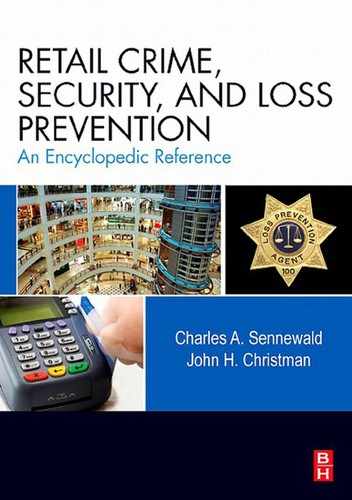Q
Quick Change Artists
Quick change con artists usually travel in groups of two or more and are criminals well versed in the art of fast-talking. Typically, the con artist or artists will bring a small purchase to a cashier and offer to pay with a large denomination bill. As the cashier hands over the proper change, the con artist “discovers” that he or she has a smaller denomination bill and withdraws the large denomination bill. With their hands already on the change, they attempt, through rapid exchange of money, to confuse the cashier into believing that the correct amount of money has changed hands. In reality, the con artist ends up walking away with all the change from the small bill plus all or part of the change issued on the larger denomination.
Your defense: The best defense against quick change cons is an alert, cautious cashier who understands the importance of taking time and not becoming rattled when money is being transacted. The cash register should be well out of the reach of customers so a con artist is prevented from “assisting” the cashier in making change. When the cashier rings up the sale, he or she should take the bill from the customer and place it on a safe but open spot away from the open cash drawer. The customer’s money should not be immediately placed in the cash drawer.
The cashier should count out the change at least twice, once to himself or herself and a second time to the customer. If the customer attempts to exchange a smaller bill for the original large bill, the cashier should retrieve the change he or she was about to give to the customer, return it to the cash register, and start over with the new bill. Until the sale has been completed, the customer’s money and the money in the cash register should not be mingled.
If the cashier becomes confused, he or she should close the cash drawer immediately and call for the store manager or supervisor to assist in the transaction. Speed and confusion are the quick change con artists’ allies: When complications develop, or their scam is slowed down, they will usually abandon the scam.
Quick change con artists take advantage of a retailer’s customer traffic (they proliferate during holiday seasons) and rely on an inexperienced or busy cashier who may not have the time to realize that scam is occurring. Often, it’s not until the cashier’s cash drawer comes up short that the business realizes that it has been victimized by a quick change con artist.
Reproduced with permission from the BBB News Release, December 13, 2001, by Better Business Bureau of South Alabama, PO Box 2008, Mobile, AL 36652.
Quotas and Goals
A “quota” in the loss prevention industry refers to a specific number of detentions each LP agent is expected to make in a given week or month or, in a more sophisticated setting, the number of detections per hours worked.
This has long since been deemed not only a poor management practice, but an invitation to severe criticism if unveiled in the court room during a civil trial for “false arrest.” The court and/or jury understand the argument that employees under pressure to produce can and do make poor decisions, and ill-advised decisions in making arrests can prove injurious to innocent customers and a threat to the shopping public. Despite this archaic and flawed practice, it still exists in some stores today.
Some retailers, recognizing the word “quotas” is no longer professionally acceptable, have switched to the word “goals,” which is no more and no less than a camouflage for the term and the practice of quotas. The authors have seen cases of companies that “skirt the line” by comments in performance reviews suggesting that the agent’s arrest production “falls below the average” or “needs improvement,” and the agent is given a goal to either improve or to reach the company’s average arrest production. Whether these goals are, in reality, quotas can be argued, but if the agent thinks they are quotas, and he or she believes tenure is dependent on achieving the assigned goal, the agent invariably tends to take “shortcuts” in making detention decisions, thus increasing the potential for errors and resulting civil suits.
When measuring or accessing the performance of loss prevention agents charged with detentions, such evaluation should be on the quality of detentions, i.e., the sophistication of the theft, the level of professionalism of the shoplifter, the amount recovered, and the level of professionalism manifest in the written report of the detention, and the processing and ultimate disposition of the offender. Which is the detention of highest quality: a teenager caught stealing $4.99 necklace or the adult who filled a black trash bag with several hundred dollars worth of goods, hides it in the center of a sales rack and then a colleague returns, retrieves the sack, and leaves the store? Each one counts as one arrest!
